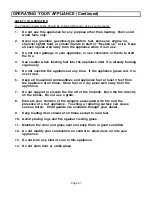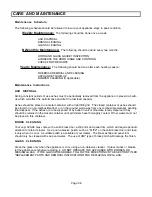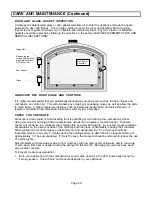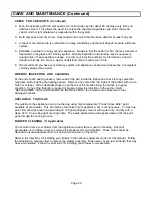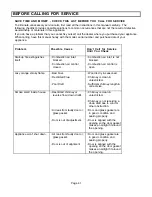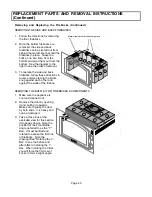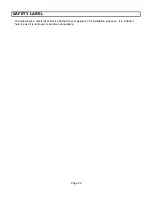
Page 48
REPLACEMENT PARTS AND REMOVAL INSTRUCTIONS
(Continued)
Removing and Replacing the Secondary Air Tubes
The secondary air tubes are two tubes with holes that run along the top of the firebox. Over time they may
wear and become ineffective. The secondary air tubes should be replaced if they crack or show severe
deterioration, because they supply air into the firebox that allows for a more efficient fire. There are two
secondary air tubes, one is in the front of the firebox and the other is in back. These parts are available
from your dealer.
To remove either
secondary air tube, first
remove the two pins
located on the right side
of the firebox that hold
the tube in place.
These pins are
removed by using a
screwdriver or needle-
nose pliers to pry them
out of their holes. The
pins are held in place
by flanges on the pins
that expand once they
are pushed into the
hole. Therefore, you
may have to pry with
some amount of force
when trying to remove
them.
Secondary Air Tube
Pins that hold Secondary
Air Tube and Collar in Place
Collar
Air Induction
System (Welded
to side of Firebox)
Slide collar to the
left after removing
both of the pins.
Short Tube that is
welded to the Air
Induction System
One pin holds the secondary air tube to a collar while the other pin holds the collar to a short tube welded
to the air induction system. Once both pins are removed, the collar can be slid to the left and the
secondary air tube and collar can be pulled down and away from the left side. To replace the secondary
air tube, place the collar on the secondary air tube, insert the secondary air tube into the hole on the left
side of the firebox, and slide the collar over to the right so it slides over the short tube that is welded to the
air induction system on the right side. Then line up the secondary air tube and collar so the holes for the
pins line up and insert both new pins that are included with the replacement air tube kit.




